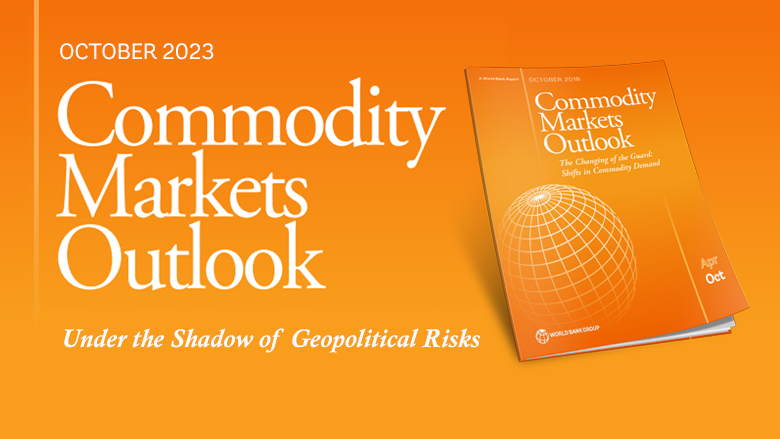Free Courses Sale ends Soon, Get It Now


Free Courses Sale ends Soon, Get It Now



Copyright infringement not intended
Picture Courtesy: www.worldbank.org
Context: The escalating conflict in the Middle East presents the risk of a simultaneous energy shock affecting oil and commodity markets, potentially leading to increased prices and food insecurity
Details
Highlights of the World Bank's Commodity Markets Outlook
|
Limited Impact So Far |
● The conflict has had limited effects on commodity markets, with only modest increases in oil prices and minimal changes in prices of agricultural commodities and metals. |
|
Baseline Forecast |
● Under the baseline forecast, assuming the conflict doesn't escalate, oil prices are expected to average $90 a barrel in the current quarter and decline to an average of $81 a barrel next year. ●Overall commodity prices are projected to fall by 4.1% next year due to rising supplies of agricultural commodities. |
|
Potential Escalation Scenarios |
●Small Disruption: If there's a small disruption in global oil supply (comparable to the Libyan civil war in 2011), oil prices could increase by 3% to 13% initially, reaching a range of $93 to $102 a barrel. ●Medium Disruption: A medium disruption (similar to the Iraq war in 2003) could lead to a 21% to 35% increase in oil prices, reaching between $109 and $121 a barrel. ●Large Disruption: In a large disruption scenario (similar to the Arab oil embargo in 1973), oil prices could spike by 56% to 75%, reaching between $140 and $157 a barrel. |
|
Dual Energy Shock |
●If the conflict escalates, the global economy will face a dual energy shock, both from the war in Ukraine and the Middle East. This could lead to higher oil prices, subsequently increasing food prices and intensifying food insecurity globally. |
|
Improved Global Resilience |
●The report notes that the global economy has become more resilient to oil price shocks since the 1970s. Countries have reduced their dependence on oil, diversified their oil exporters, and expanded energy resources, including renewables. ●Some nations have also established strategic petroleum reserves and coordinated supply arrangements to mitigate the impact of oil shortages on prices. |
|
Warning Signs from Gold |
●Gold prices have risen about 8% since the conflict began, indicating investor concerns and a potential erosion of confidence due to geopolitical uncertainties. |
|
Policy Recommendations |
●Policymakers need to remain vigilant and be prepared to manage potential increases in headline inflation. ●Developing countries should avoid trade restrictions like export bans on food and fertilizer, which can exacerbate price volatility and food insecurity. ● Governments should refrain from introducing price controls and subsidies in response to higher food and oil prices. ●Improving social safety nets, diversifying food sources, and enhancing efficiency in food production and trade are recommended strategies to mitigate the impact of rising commodity prices. ●Countries can enhance their energy security by accelerating the transition to renewable energy sources, which would help mitigate the effects of oil price shocks in the longer term. |
Conclusion
|
PRACTICE QUESTION Q. How does the current state of the global economy, including factors such as trade policies, geopolitical tensions, and economic slowdowns in major economies, impact India's economic growth and stability? What are the key challenges and opportunities that India faces in navigating its economic path amidst these global dynamics? |
© 2024 iasgyan. All right reserved